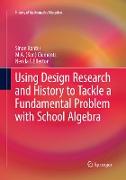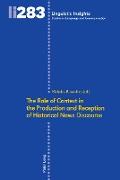Using Design Research and History to Tackle a Fundamental Problem with School Algebra
BücherAngebote / Angebote:
In this well-illustrated book the authors, Sinan Kanbir, Ken Clements, and NeridaEllerton, tackle a persistent, and universal, problem in school mathematics—why doso many middle-school and secondary-school students find it difficult to learn algebrawell? What makes the book important are the unique features which comprise thedesign-research approach that the authors adopted in seeking a solution to the problem. The first unique feature is that the authors offer an overview of the history of schoolalgebra. Despite the fact that algebra has been an important component of secondary-schoolmathematics for more than three centuries, there has never been a comprehensivehistorical analysis of factors influencing the teaching and learning of that component.The authors identify, through historical analysis, six purposes of school algebra:(a) algebra as a body of knowledge essential to higher mathematical and scientificstudies, (b) algebra as generalized arithmetic, (c) algebra as a prerequisite for entry tohigher studies, (d) algebra as offering a language and set of procedures for modelingreal-life problems, (e) algebra as an aid to describing structural properties in elementarymathematics, and (f) algebra as a study of variables. They also raise the questionwhether school algebra represents a unidimensional trait.Kanbir, Clements and Ellerton offer an unusual hybrid theoretical framework for theirintervention study (by which seventh-grade students signifi cantly improved theirelementary algebra knowledge and skills). Their theoretical frame combined CharlesSanders Peirce’s triadic signifier-interpretant-signified theory, which is in the realm ofsemiotics, with Johann Friedrich Herbart’s theory of apperception, and Ken Clements’and Gina Del Campo’s theory relating to the need to expand modes of communicationsin mathematics classrooms so that students engage in receptive and expressive modes.Practicing classroom teachers formed part of the research team.This book appears in Springer’s series on the “History of Mathematics Education.”Not only does it include an important analysis of the history of school algebra, but italso adopts a theoretical frame which relies more on “theories from the past, ” than oncontemporary theories in the field of mathematics education. The results of the well-designedclassroom intervention are sufficiently impressive that the study might havecreated and illuminated a pathway for future researchers to take.
Folgt in ca. 5 Arbeitstagen

